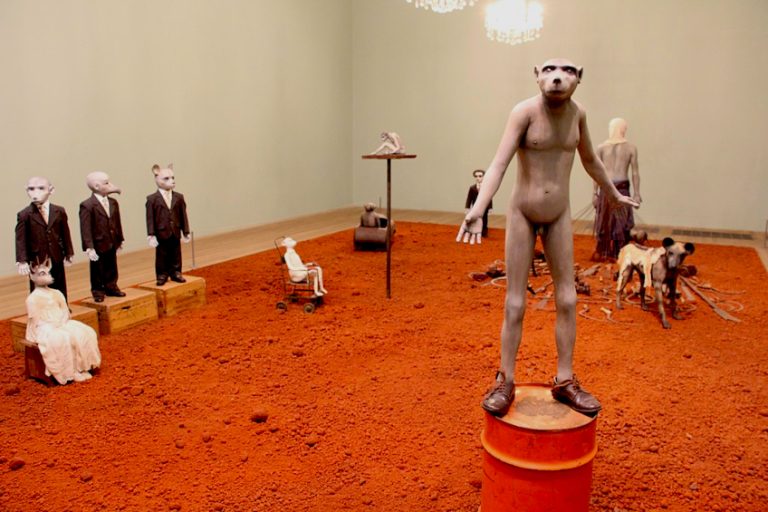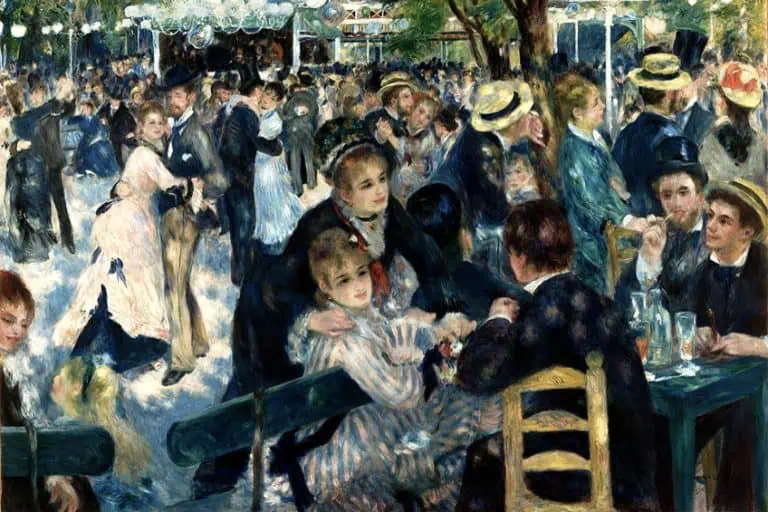How to Make and Sell Prints of Your Art – Selling Art Prints Easily
This post may contain affiliate links. We may earn a small commission from purchases made through them, at no additional cost to you.
Have you created artwork that you want to share with others? Do you want to discover how to make and sell prints of your art? There is more than one way to do this, and it does not have to be expensive to do so. Selling art prints can be a great way to introduce your artwork, remain independent, and make some extra money out of it.
Table of Contents
Defining an Art Print
An art print is a way to create a printed version of your canvas art. So, a print is an exact copy of an original painting and can be reproduced on a large scale. This provides a more budget-friendly option for interested buyers. An original painting is a once-off piece and will cost more.
Paintings are often bought as an investment and are often considered by museums, galleries, and art collectors.
Not every artist will think of selling art prints, while others only sell their printed art. To get the best of both worlds, it might be a good idea to do a little of both. Original artworks should retain their value, even if an artist produces cheaper art print versions.

An ideal situation would be to have a catalog of artwork available that can be sold day or night. However, selling art prints plays a more supportive role for an artist. Art prints can help to broaden an artist’s reach and can also help to create more recognition of the original pieces. Art prints also make amazing gifts.
Types of Prints
There are a few options when it comes to printing types, the two most common are fine art prints and traditional prints. The traditional prints are the older way of doing things and use a lab with light-sensitive photo paper. The images are then chemically developed. These are more common for photography prints. Fine art prints provide a high-quality print and are done using a large format inkjet printer and archival paper or surface.
The types of paper used can vary from fine art paper, which can come in various forms that provide smooth, glossy, matte, or textured effects.
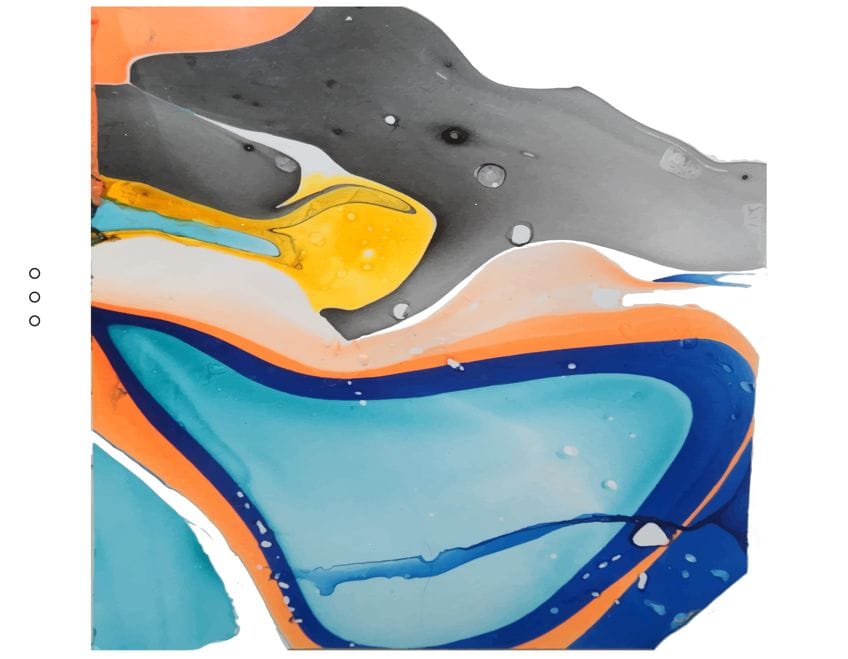
Should you choose matte or gloss art prints? There are no real set rules about it, and it all depends on the artist and what they want to achieve. However, since the art prints should be as close as possible to the original, many recommend that it should be matte. If it is a photographic print, it is recommended that it should be a gloss print. Prints can also be done on canvas, which then adds a lot more texture to the final print. What must you look at when choosing a print type?
- Is the paper you want to use archival? This means the paper is durable and acid-free. Be aware of cheaper options and materials.
- Will the print be true to the original painting or artwork? For example, choosing a glossy and smooth surface might work well with a landscape that has more texture.
- If you are uncertain, ask the printing company about options. They can assist you, or you can look to see what other artists use.
How to Get Your Art Printed
So, you want to make prints of your canvas art, but you are not sure how to get your art printed. Try to first find a popular and local printing shop. You can ask friends, chat with a photographer, or find reviews online that people recommend the most. You also have print-on-demand companies, who will use your artwork to create items and then will also ship the items for you. Of course, you can also print them yourself, but you will need a good camera, editing software, and a good printer. The benefit of having someone else doing it leaves you with more time to work on your art piece.
Whatever choice you make, the prints must be of high-quality and resolution – the more pixels, the better the quality.
How to Sell Prints of Your Art
First off, why is selling art prints so popular? When you make prints of your canvas art, it is not to render the original ineffectual, art prints rather extend their value. Below are some benefits of selling art prints.
- Art prints are a more accessible and affordable option for buyers, so you can also gain more exposure. Art prints are also very popular today.
- You can usually purchase different sizes and types of prints, so they are quite versatile.
- Artists can sell the prints over and over again and gain leverage, while an original piece is done and gone on the first sale. In this way, you do not completely lose the original piece.
- Many art prints may even last longer than their original counterpart, which means you can even hang them up in a sunny spot.
- Printing art pieces can provide another way for an artist to earn money.
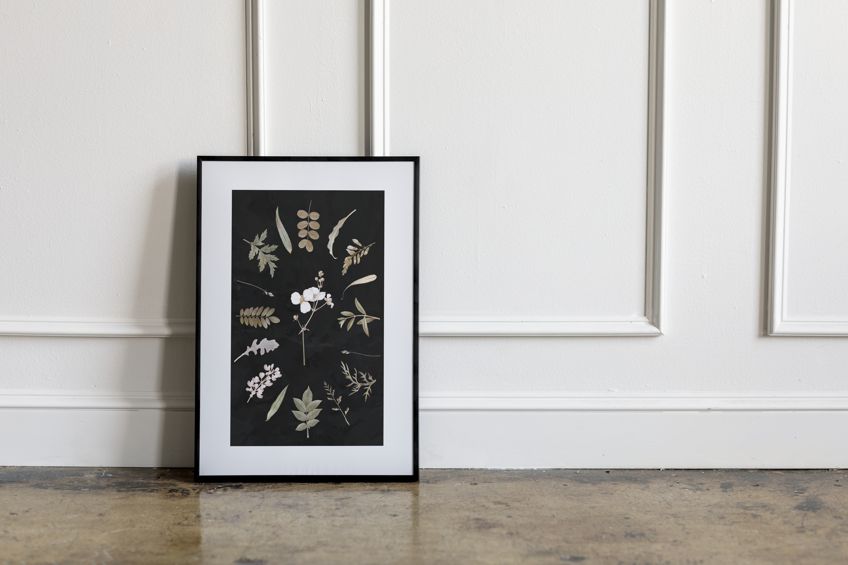
Next comes the more difficult part for some, which is how to sell prints of your art. If you are going to be selling your art prints, you should gain a bit more knowledge on marketing and running your own business. In years gone past, many artists displayed and try to sell work at local craft markets, in galleries, and in other shops. These methods are still done, but when it comes to selling the art prints online using your own website, it helps to provide a wider reach and exposure to more people. Social media platforms can help greatly with this. This provides more control over everything, including creating your own look and brand. However, you must do everything yourself and this includes shipping your orders. Shipping can be done by yourself or through a third party.
Shipping yourself does give you more control, and you can choose the packaging and branding, and include small touches like thank-you notes. But it does take time to do this and may cost more.
If you are not up to creating your own website, there are options where you can list your prints on somebody else’s website, for example, fineartamerica.com. Here you can list your artwork, and they provide tools for marketing and sales, and you can brand your webstore. This is what is called a print-on-demand option, and this usually includes shipping, where you get a percentage of the sales, and they handle everything else. The difficulty is that there are many other artists also selling their art. Many artists might recommend marketing yourself and building your brand, so you can stand out more from the competition. There are many other print-on-demand printing services, check out some more of them below:
There are many other ideas besides making an art print you can put on the wall. You can place images on various other merchandise, for example, postcards, T-shirts, bags, mugs, magnets, and more. Just makes sure what you do also fit in with your brand. Do not try to do everything all at once, as it might detract from your brand and what image you want to put out there.
You can decide to sell some limited edition prints to help create more interest in your work.
Three of the Best Online Printing Services
If you want to still have control and print your own prints, but you do not have the equipment to do it yourself, then there are many online printing services. You do not have to travel far to get access to these types of services, it is all available online. Here are three of the more popular printing services.

Candela Fine Art and Printing
Candela fine art and printing offers services from their Oakland studio, where they scan and print for artists, illustrators, painters as well as photographers. They use the top methods as well as equipment to create the best fine art prints. They offer high-quality and professional prints, excellent support, and are affordable. The company also offers free drop-shipping options. The only complaint mentioned is problems with the web interface when placing orders.
PROS
- Professional service
- Competitive pricing
- Precision printing
- Dropship options available
CONS
- Ordering online difficulties
Bay Photo
Bayphoto has been around for many years and has the experience to offer great services. They are based in Northern California and offer high-quality fine art prints. The archival inks used provide beautifully smooth and vibrant colors. You also have a choice of 18 different fine art papers that will be printed on a high-resolution large-format inkjet printer.
PROS
- Quick service
- High-quality prints
- A variety of papers
CONS
- Expensive
Loktah Fine Art Printing
Loktah offers a variety of paper options and the best archival print quality. They cater mainly to professional artists, so might be a bit more on the pricier side of things. All of the prints provide clear images and vibrant colors, and the company is focused on only offering printing excellence. They also pride themselves on great customer satisfaction.
PROS
- Ideal professional service
- Excellent quality
- Circle prints available
CONS
- Can be expensive
- Paper options are limited
How to Make Prints of Paintings
We have already been through how to make and sell prints of your art but let us now take a closer look into how everything is done. We have already established you have three main options, printing at home, using a printing company, and lastly, you have the print-on-demand option.

Printing at Home
Printing yourself at home can be a challenging option, as you need specialized equipment and other tools and materials. You will need a good scanner, a high-quality printer, an editing program like Photoshop, and your paper, which should also be of good quality, archival, and acid-free.
Editing Programs
There are many photo editing programs you can use, with Photoshop being an extremely popular choice. They even provide a free trial before you have to buy. If you only doing this once-off, you might consider using free online editing software programs like Canva or Gimp. However, if you plan to print and sell your artwork, it is best to get yourself a proper editing program.
There are plenty of courses you can take to help you learn and use Photoshop and this can also help above and beyond simply making prints.
Scanners and Printers
You can easily get a second-hand scanner at a cheaper price. Although it is best to have a good quality scanner, you need to make sure it can pick up on all the shades and colors. The same goes for the printer, you cannot make prints on a regular printer for the best results, you need good quality equipment. The printer should be high-quality, in large format, and should use pigment-based inks instead of the dye-based options most standard inkjet printers use. Again, if you do not have any of these, a local or online printing shop is your best option.

Preparing, Scanning, and Editing Your Artwork
Your first step is to scan the artwork, so you need to make sure that the scanner is clean and dry. The scanner should be free of any marks, as you do not want these to land up in a scanned image. You can simply use a clean and soft cloth that is lint-free because any fluff can also get in the way. You will have to connect the scanner to your laptop or PC.
Place the artwork in the scanner and make sure it is lined up correctly. The artwork should be aligned properly all around, otherwise, you will not get a complete scan of the art. This is also important if the artwork is larger than the scanner and you need to scan more than once. Scan your work and then import them to your imaging software.
One important feature to point out is the DPI (dots per image), which you can find within the software.
The more dots, the higher the quality of the image. You want a higher resolution for your final results when printing. We recommend setting the DPI to at least 300 dpi for creating a standard print. If this is any lower, the image may start to appear out of focus or pixelated.
You can then edit the scanned image, take parts out, and add parts in, which should be no problem for programs like Photoshop. For the larger art pieces that were scanned in batches, you will have to combine the images to form a whole image within Photoshop. There are tutorials you can follow to improve your skills using the program.
Printing the Artwork
You can do a print test to see how close the print is to the original art piece. Make sure to print out on acid-free and archival paper, especially for fine art prints. The print test page may have slightly different shades of color when compared to the screen version and original artwork. If you are not happy with the colors, you can make a variety of adjustments to shade, tone, and saturation.
You can do more test pages until you are happy.
You do not want to start by printing out an entire batch of prints without proof first, you could waste a lot of ink, paper, and money doing this. When creating your art and you know you want to create art prints, it is best to choose paper that is made for fine art prints. However, you can also scan a stretched canvas, but this is more difficult to do.

So, before you begin your artwork, maybe consider using something like canvas paper instead, which is flat and can easily be scanned. When you are printing artwork yourself for the first time, it is best to opt for the simplest and easiest methods.
As we mentioned earlier, it is up to you whether you want a glossy or matte finish or something with more texture. Matte paper, it does diffuse the pigments more effectively than glossy paper. So, if you want to have a print with more detail, it might be best to use paper that has a glossy finish to it. You can also get semi-gloss if you do not want something that is too shiny.
The Benefits and Drawbacks of Printing at Home
If you plan to create prints of your artwork for a long time, then printing at home and getting all the equipment necessary can be a good investment. You also have more control over the entire process, and it can be done quite easily, once you understand what you need to do. You also do not have to worry about minimum orders or spending amounts, you can do as much or as little as you want.
You also get the full payment and profit for all the work done.
On the other hand, all the equipment needed can be a costly beginning to printing your artwork. It will also take some time to learn all the ins and outs of how to work the scanner, printer, and editing program. There will be a learning curve along the way, which will use up a lot of time you could be spending working on your art projects. The whole process can be hard work to get what you want.
PROS
- Good investment for long term work
- Have full control over entire process
CONS
- Can be expensive
- You need to learn how to do everything
Making Use of a Printing Company
So, you do not want all the hassle of doing the printing yourself. This is where the printing companies come in handy. You can use the printing company to print your artwork, and then they send it to you, and you then ship it to your customers.
This will save you a lot of time and effort and you get to market your prints as you like.
You can set the price, just remember to take into consideration the costs of printing the art and then also shipping the artwork. This still allows for a more personal touch when dealing with customers. You can also still check the quality of the printed art before it is sent out.
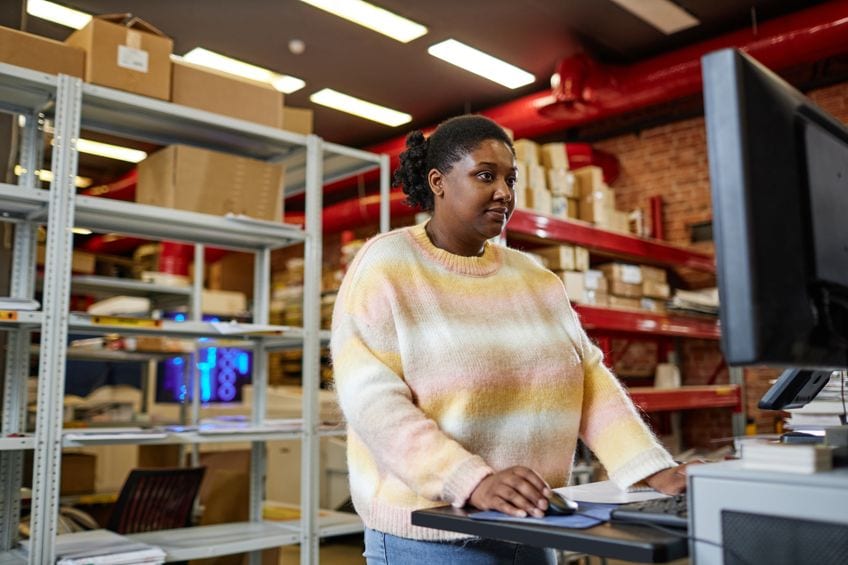
The most common way you will receive your prints from the printers, is rolled up in a tube. You can then flatten the prints or send them in the tube to the customer and inform them how to flatten the printed artwork. Here are the steps for flattening the printed paper.
- Your hands must be clean and dry before you begin flattening the paper.
- The surface you are going to work on should also be clean and flat, consider using a flat glass surface.
- Gently roll the print out onto the surface, making sure the printed side faces down.
- Have a few heavy books available and place them on each corner of the print, as well as one in the middle.
- Leave everything for at least several hours. You should now have a print that is flat and can be framed.
- Do not forget to include this step-by-step process with your printed artwork for customers. It is a good idea to send unframed prints, as this saves on shipping and the customer can choose their own frame.
The Benefits and Drawbacks of Using a Printing Company
When using a printing company, you do not have to purchase any of the equipment, and you get to save time, and maybe even money because you do not have to learn how to use anything. Your prints should come out professionally every time, there is no trial and error on your part. The printing companies also offer different types of paper to print on. You can choose the finish and size without having to go out and find these materials yourself. A drawback is that you have minimal control over the entire process and what materials they use.
Many printing companies also require you to purchase in bulk, so you cannot just order a few prints.
PROS
- Save time and money
- No special equipment needed
- Professional prints
- Different paper options available
CONS
- Little control over the process
- You might need to buy in bulk
Print-on-Demand Companies
These types of companies let you upload your work and then customers can choose the artwork and have it printed on a variety of items like T-shirts, mugs, and canvas. They then print onto the physical item and send it to the customer.
You do not do much in this whole process, and it is an easy and hassle-free method of printing your artwork.
All you have to do is usually register and set up an account with your profile and details, which is usually free to do. Many of the platforms may payout into your bank account or use PayPal. You should double-check to see what they offer. There might also be hidden costs involved, so be sure to understand everything before registering.
Once registered, you can upload your work, and you need to decide how much your markup is going to be. For this, you should do some research to find out things like what current prices are, look into a competitor, what are consumer opinions, and how in-demand is the product. You also need to consider the other costs like production, shipping, and taxes amongst others.

If you are using a platform like Etsy, you also have to take into account that a percentage of the sales will go to these companies. So, there are quite a few things to look into before deciding if this is the right path for you. In the end, you might not get the highest profit and you will need to sell quite a lot to make a good profit.
This does not mean that print-on-demand is not a good idea, Many artists have successfully used this type of platform. It simply means you should do a bit of research before spending money and time on this. Compare it to your other options for making and selling art prints.
The Benefits and Drawbacks of Using Print-on-Demand Companies
Going this route may seem easier since it seems that all you have to do is upload your work and sell, but there are challenges you need to consider. It is great that the manufacturing and shipping of the products are done for you, and many platforms have sales and marketing tools, but not all print-on-demand companies are the same.
You can also do more than fine art prints, you can try printing on bags and other merchandise. However, not all art can successfully be used in this manner, so you will need to choose wisely when creating and designing for this purpose.
Your profits are low, as there are a lot of fees and additional costs. Sales also will not work automatically; you need to put in the work to get seen above your competitors. Quality can also sometimes be an issue, as you do not get to see the final product before it gets shipped. You also do not retain much control over your brand and client list.
PROS
- Everything is done for you
- More merchandise options
- Easy option if you are just starting
CONS
- Not all art is suited to print on merchandise
- There is a lot of competition
- Quality of final product can be a problem
- Not much control over the process
Other Points to Consider When Selling Art Prints
Let us look at pricing for your prints, as you saw for the print-on-demand option, there are quite a few things to consider. As for the other options, you also need to consider them even more, as you have to deal with all of the issues yourself. Prints in general, are more accessible products, and you cannot price them similar to original pieces. There are a few artwork pricing formulas you can also use to get a rough idea of what you should be charging.
In the US, you do not need to register your copyright to gain protection. However, if you register at the US Copyright Office, it does provide some advantages. For one, registration simply helps to create a record of your ownership. Also, if you want to take an infringer to court, and receive compensation for damages, you need to be registered.
Tips for Selling Art Prints
You can very easily begin selling art prints if you are willing to put in the work, and you will reap the rewards. Artists no longer have to rely heavily on others to sell their art pieces and can take more control over how they earn. Some tips on how to make and sell prints of your art can always come in handy.
- Before starting, try to find a niche that stands apart from your competitors.
- Take an art business course, and learn how to market your product, manage your money, understand the legal side of things, and other important aspects.
- You should do your research before using print-on-demand services, they are not all the same.
- Consider selling on different multiple online marketplaces to broaden your stream of income. Consider online craft markets, online auctions, and galleries, or think about developing a course.

- If you do not want a third-party involved, create your own website and e-commerce store.
- Become skilled in using social media platforms. You can even begin blogging about your art.
- Always provide a professional and full description of your artwork online. It should be free of mistakes and easy to read. Understand SEO and how keywords can help.
- Stick to your plan for at least six months, nothing happens overnight.
There are many ways to make a living as an artist besides relying on sales from galleries. Thankfully, today with all the modern conveniences, you can learn how to make prints of paintings and then sell them to customers. Selling art prints opens up new and exciting possibilities for sales.
Frequently Asked Questions
Can Art Prints Be Done at Home?
Yes, you can make prints of your canvas art at home. However, you will need a high-quality scanner and printer as well as paper to do this. If you are new to everything, you might want to use a printing company. However, either way, you must first digitize your artwork.
Can You Print Art With a Normal Printer?
No, this is not recommended, especially if you want to make great-quality prints. The best option would be a large format printer that is pigment based instead of dye-based. So, you will need to invest in a good printer if you want good-quality prints.
What Paper Is Best for Art Prints?
Since you need high-quality equipment, you also need quality paper. You will need to print on fine art paper of which you can get different types. In general, the paper should be archival and acid-free, and no less than 150 GSM. The best would be between 200 and 300 GSM, but it does also depend on the printer and your budget.
In 2005, Charlene completed her wellness degrees in therapeutic aromatherapy and reflexology at the International School of Reflexology and Meridian Therapy. She worked for a company offering corporate wellness programs for several years before opening her own therapy practice. In 2015, she was asked by a digital marketer friend to join her company as a content creator, and it was here that she discovered her enthusiasm for writing. Since entering the world of content creation, she has gained a lot of experience over the years writing about various topics such as beauty, health, wellness, travel, crafting, and much more. Due to various circumstances, she had to give up her therapy practice and now works as a freelance writer. Since she is a very creative person and as a balance to writing likes to be active in various areas of art and crafts, the activity at acrylgiessen.com is perfect for her to contribute their knowledge and experience in various creative topics.
Learn more about Charlene Lewis and about us.






